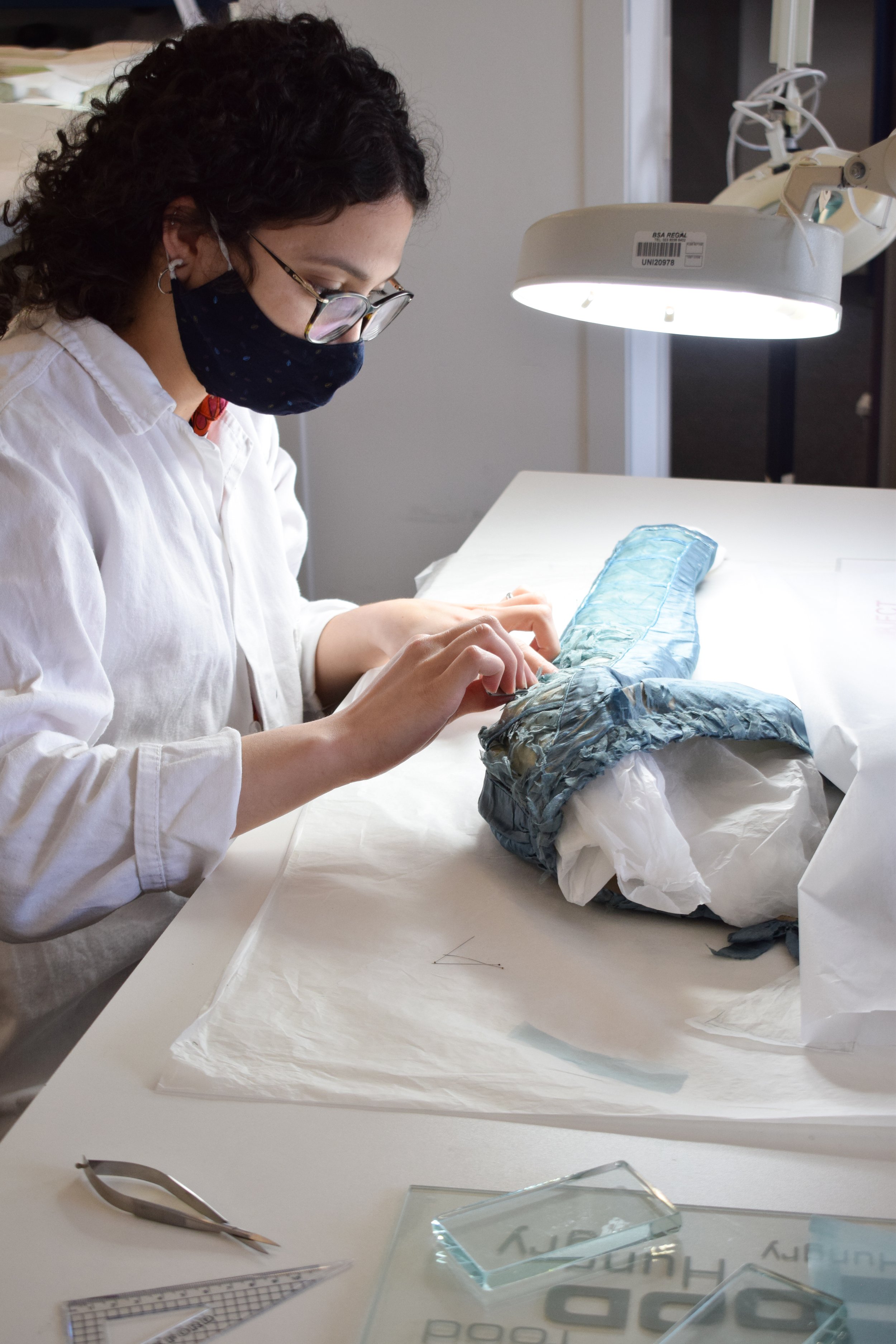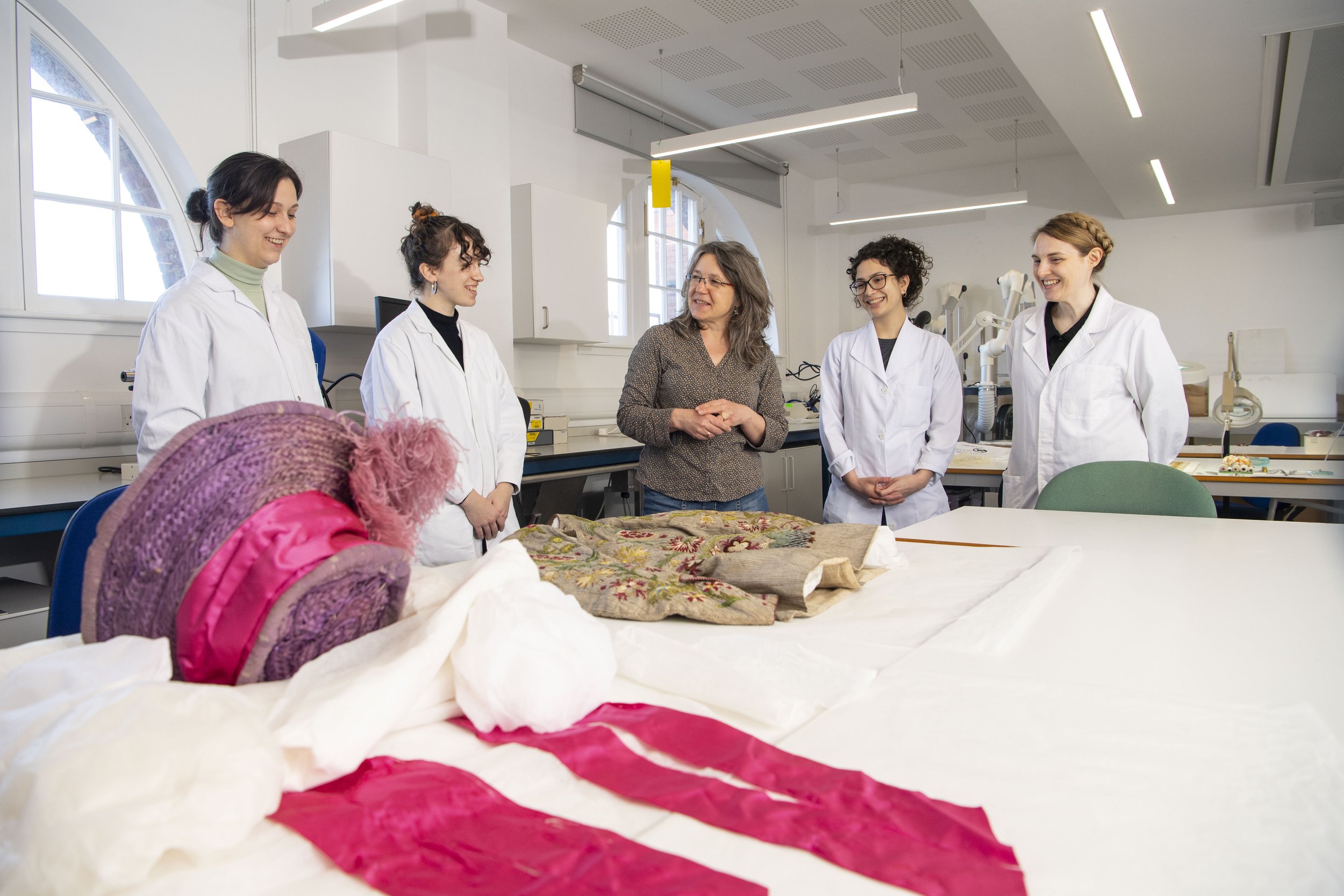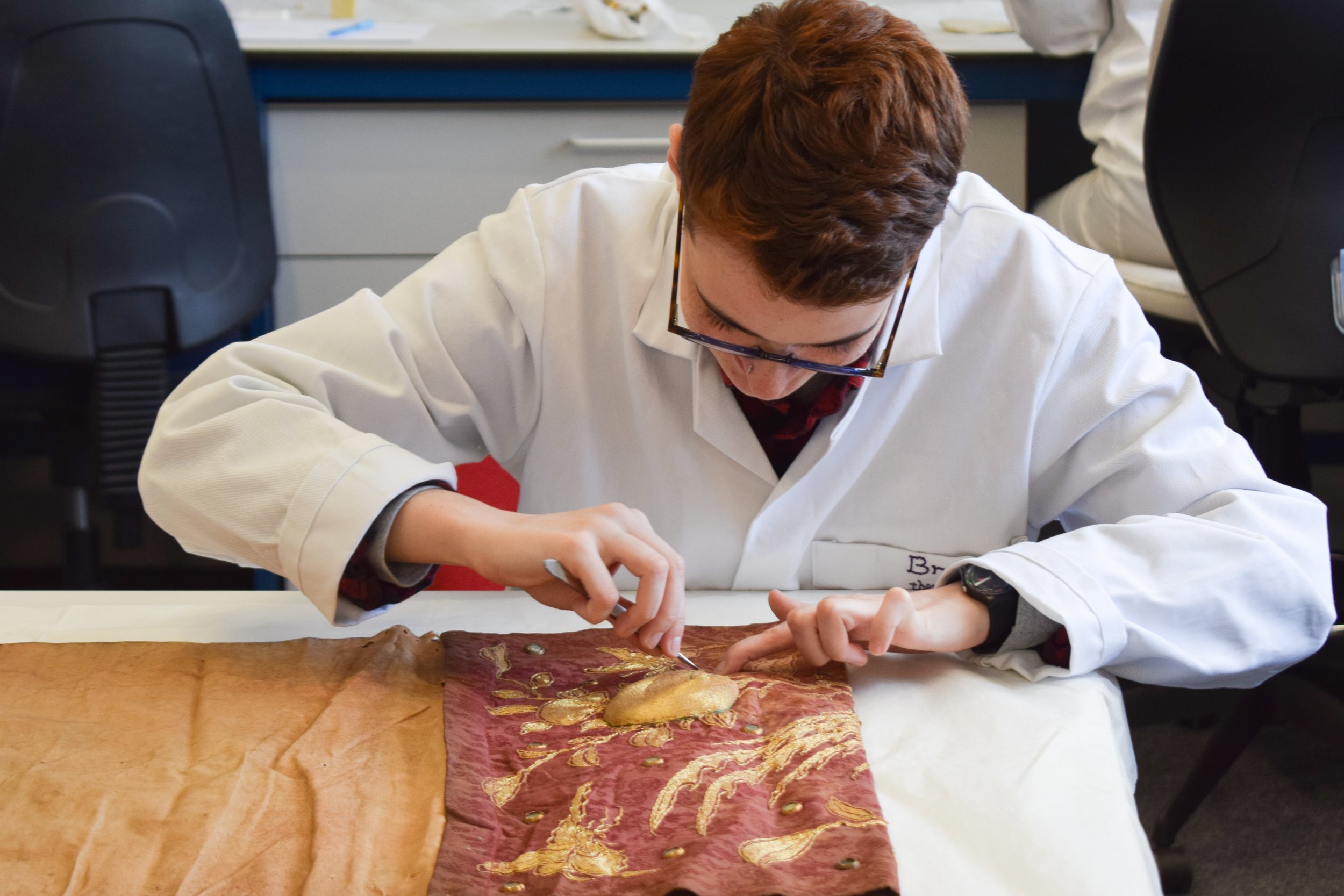Visits to museums and conservation studios are always fascinating and certainly add richness to the course for the students of the Centre for Textile Conservation.
As Sarah Foskett, Lecturer, writes: “our visit to Perth Museum and Art Gallery last week was a great example of how important it is to look up and beyond our everyday practice and how enjoyable, informative and inspiring it is to engage with other museum colleagues and projects.
The future of The City Hall, one of Perth’s most significant buildings since it was opened in 1908, had been uncertain for more than a decade when in 2017 Perth and Kinross Council voted to develop the museum to tell the story of Perth’s place at the heart of Scotland’s history as well as hosting major touring exhibitions. JP talked through the stages of development of the project that will form the permanent and temporary displays – from interpretation of the narrative (including applying for the return of the Stone of Destiny) to theme mapping and layout (Pictish stones are very heavy!) and from environmental modelling (the existing building is filled with light) to selection of the approximately 7,000 objects (from a collection of +/- 430,000). What was both clear and inspiring was how the project was being driven by a combination of good communication and extreme multi-tasking – there was definitely a sense of shared purpose between the Exhibition Curator, JP Reid, and Conservation Officer, Anna Zwagerman, and it was clear that the dialogue with the architects and designers was similarly positive.
One of the objects going into the new displays is Ta-Kr-Hb, an Egyptian mummy which has fascinated visitors since its entry into the collection in the 1930’s and Anna has seized the opportunity to use the conservation of this iconic object to engage visitors with both the practical process of conservation and the ethical dilemmas associated with objects and their display. Anna talked through the evolution of the Conservation in action: Saving the Perth Mummy exhibition, highlighting both the logistic and moral challenges faced by showcasing the conservation of such sensitive (in all meanings of the word) materials.
Our visit had been arranged to coincide with lead conservator, Will Murray of the Scottish Conservation Studio being ‘in residence’ and in small groups we were able to go inside the glazed conservation studio built temporarily within the gallery where Will talked about the treatment being undertaken to stabilise and support the mummy, linens and sarcophagus for their long term preservation and display in the new museum. Whilst not ‘inside the box’ we looked at cleverly designed displays focused on highlighting the impact of agents of deterioration on objects as well as the complexities of displaying objects with multiple biographies. A highlight for the students was seeing a rare 17th century doublet which features as the cover image for one of their textbooks!
Sometimes an ‘away day’ is in fact just what you need to enliven and invigorate your own practice, broaden your perspectives and benefit from the experience of others and this is certainly how we all felt after our visit to Perth.”













